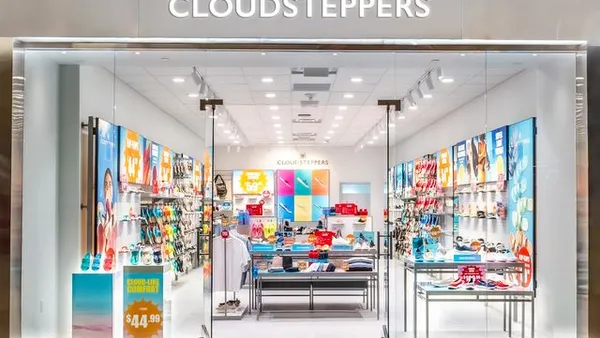Dive Brief:
- Whole Foods has terminated the store graphic artist position and laid off all regional marketing staff below the level of associate coordinator, according to Business Insider. The decision applies throughout the company. It is unclear how many positions are being eliminated.
- In a seven-minute recording, the northeast regional manager said the decision was made to further centralize marketing operations, including "the creation and production of signage and decisions around signage needs," according to Business Insider.
- The move follows the departure of more than a dozen executives who have left due to cultural differences with new owner Amazon.
Dive Insight:
The efforts to centralize Whole Foods' operations, initiated by the company before it was acquired, are continuing apace, raising questions about whether the grocer is losing its identity and how much that really matters.
The store graphic artist is a position that sits close to the core Whole Foods brand. These individuals create custom chalk signs and other displays listing prices, vendor profiles and other information. One store graphic artist in Bend, Oregon said on Whole Foods' website that they are "responsible for those chalkboards as well as the accuracy of item/pricing signage, maintenance of the associated databases and the creation, upkeep and distribution of all advertising and in-store marketing collateral."
These workers helped advertise local products and producers, which could vary from store to store. With Whole Foods cutting ties with many small producers as it centralizes its buying efforts and institutes new marketing fees, it makes sense that the graphic designer position would be on the chopping block.
It's unclear what responsibilities fell to the regional marketing staff that were terminated. What is apparent is that Whole Foods' high operating costs needed to come down. Although the grocer started the centralizing process, Amazon, renowned for its efficiency, is more than willing to continue this work.
The cultural clash between the two companies was not unexpected, and mergers frequently result in staff shakeouts and corporate defections. But Whole Foods' mainstream drift could come at the price of brand identity. In addition to favoring large suppliers, Amazon reportedly wants to bring in products that fall outside the grocer's "all natural" standards, such as Coca Cola. Whole Foods recently held a summit to reassure suppliers of its commitment to its core standards.
Significant changes have been long overdue at Whole Foods, which has some of the highest operating costs in the industry. Many have called for the grocer cut back on its workforce and product count. But while Whole Foods has lost out to the competition in recent years, the grocer's brand remains very valuable.
Barclays analysts highlighted this balancing act in a recent note to investors. They expected Amazon to "conventionalize" Whole Foods, but note this could come at the cost of differentiation. During store trips, they've noticed the grocer increasingly promoting large brands like Domino Sugar and less-than-healthy selections such as pizza and chocolate.
"While technically staying true to the company's core values — the shift still comes with risk (as well as opportunities)," the analysts wrote. "If not done successfully, [Whole Foods] increasingly becomes just another grocer — which could create a meaningful opportunity for other specialty players to take share (e.g., Sprouts, Natural Grocers, Earthfare). If done successfully, [Whole Foods] could broaden its customer base without alienating its core consumers or harming its core competencies."















